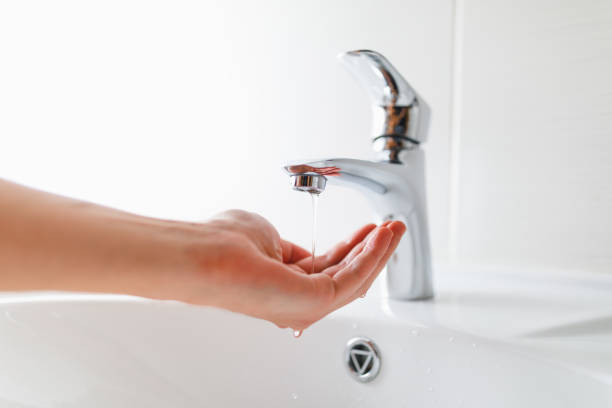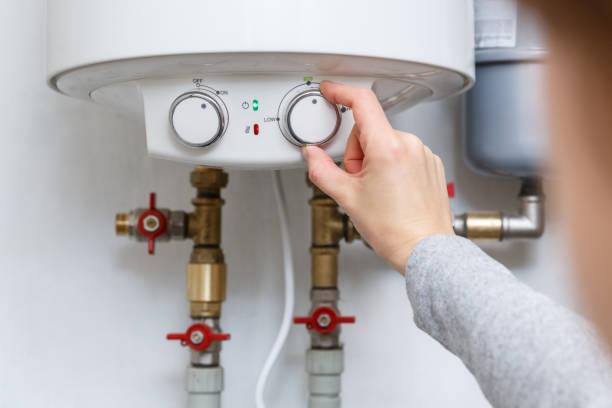
Low water pressure can be a frustrating issue for homeowners. Whether it's a trickle in the shower, slow-filling sinks, or an overall lack of water flow, identifying and resolving the root cause is essential for restoring normal water service. In this comprehensive guide, we'll explore various potential causes of low water pressure and provide detailed troubleshooting tips and tricks to help you resolve the problem effectively.
Understanding Water Pressure
Water pressure is the force exerted by water as it flows through pipes. It's measured in pounds per square inch (PSI). Plumbing companies in San Diego CA Identifying the underlying cause is the first step toward fixing the issue. Adequate water pressure ensures that water flows efficiently from faucets, showerheads, and other fixtures. Normal residential water pressure typically ranges between 40 and 60 PSI. Low water pressure can manifest in different ways, including weak flow from faucets, reduced shower pressure, or slow-filling appliances.
Common Causes of Low Water Pressure
Low water pressure can result from a variety of factors, ranging from simple issues like clogged aerators to more complex problems within the plumbing system. Let's explore some common causes:
- Clogged Aerators and Showerheads
- Leaking Pipes
- Faulty Pressure Regulator
- Corroded Plumbing
- Municipal Water Supply Issues
- Water Softener Problems
- Closed or Partially Closed Valves
- Peak Water Demand
- Water Heater Issues
- Old or Outdated Plumbing
1. Clogged Aerators and Showerheads
One of the most common and easily fixable causes of low water pressure is a clogged aerator or showerhead. Over time, mineral deposits, sediment, and debris can accumulate in these fixtures, obstructing water flow.
Troubleshooting Tips:
- Remove and Clean Aerators: Unscrew the aerator from the faucet, soak it in vinegar to dissolve mineral deposits, and scrub away any remaining debris with a brush.
- Clean Showerheads: Detach the showerhead, soak it in vinegar, and use a toothpick or small brush to clear out any blockages in the nozzles.
2. Leaking Pipes
Leaks in the plumbing system can significantly reduce water pressure. Water escaping from pipes reduces the amount of water available at the faucet or showerhead.
Troubleshooting Tips:
- Inspect for Visible Leaks: Check for damp spots, water stains, or puddles around your home, especially in areas where pipes are exposed.
- Listen for Drips: In quiet environments, listen for dripping sounds that could indicate a hidden leak.
- Monitor Water Meter: Turn off all water fixtures and observe the water meter. If it continues to move, there's likely a leak in the system.
3. Faulty Pressure Regulator
A pressure regulator controls the water pressure entering your home from the municipal supply. If it's malfunctioning or set incorrectly, it can cause low water pressure.
Troubleshooting Tips:
- Locate the Pressure Regulator: Typically found near the main water line where it enters the house.
- Check and Adjust Settings: Use a pressure gauge to measure the water pressure. If it's below the recommended range (40-60 PSI), adjust the regulator according to the manufacturer's instructions.
- Replace if Necessary: If adjusting the regulator doesn't improve pressure, consider replacing it.
4. Corroded Plumbing
Older homes with galvanized steel pipes are prone to corrosion, which can restrict water flow and reduce pressure. Corroded pipes can also develop leaks, compounding the problem. When planning renovations for such homes, it's crucial to find the right plumbing service for home renovations that understands the unique challenges posed by aging plumbing systems.
Troubleshooting Tips:
- Inspect Pipes for Corrosion: Look for signs of rust or discoloration on exposed pipes.
- Test Water Flow: If certain fixtures have lower pressure than others, it could indicate localized corrosion.
- Consult a Professional: Corroded pipes often require replacement, so it's best to consult a plumber for a comprehensive assessment and solution.
5. Municipal Water Supply Issues
Sometimes, the issue isn't within your home but with the municipal water supply. Construction, maintenance, or emergencies in the water distribution system can temporarily affect pressure.
Troubleshooting Tips:
- Check with Neighbors: Ask if they are experiencing similar issues. If so, the problem likely lies with the municipal supply.
- Contact the Water Provider: Reach out to your water utility to inquire about any ongoing issues or maintenance work.
6. Water Softener Problems
Water softeners can sometimes malfunction, causing a drop in water pressure. If the softener is clogged or not regenerating properly, it can impede water flow.
Troubleshooting Tips:
- Inspect the Softener: Check for clogs in the resin bed or salt bridge. Clean or replace components as needed.
- Bypass the Softener: Temporarily bypass the water softener to see if pressure improves. If it does, the softener is likely the culprit.
- Regenerate the System: Manually regenerate the water softener to ensure it's functioning correctly.
7. Closed or Partially Closed Valves
Valves that are not fully open can restrict water flow, leading to reduced pressure. This includes both main shut-off valves and individual fixture valves.
Troubleshooting Tips:
- Check Main Shut-Off Valve: Ensure the main valve is fully open. It's usually located near the water meter or where the main water line enters the house.
- Inspect Fixture Valves: Check that valves under sinks, behind toilets, and at other fixtures are fully open.
8. Peak Water Demand
High water demand periods, such as mornings or evenings when many households are using water simultaneously, can cause temporary drops in pressure.
Troubleshooting Tips:
- Observe Patterns: Note if the low pressure coincides with peak usage times.
- Use Water During Off-Peak Hours: Try using water during less busy times to see if pressure improves.
9. Water Heater Issues

Water heaters can affect pressure if they are not functioning correctly. Sediment buildup, a malfunctioning pressure relief valve, or other issues can impede water flow.
Troubleshooting Tips:
- Flush the Water Heater: Regularly flush the tank to remove sediment buildup that can restrict flow.
- Check Temperature and Pressure Relief Valve: Ensure the valve is operating properly and not releasing excess water.
- Inspect for Leaks: Look for leaks around the water heater that could affect pressure.
10. Old or Outdated Plumbing
Older homes may have outdated plumbing systems that aren't designed to handle modern water usage demands. Signs of drain problems Narrow pipes, old fixtures, and outdated designs can contribute to low pressure.
Troubleshooting Tips:
- Evaluate Plumbing System: Have a professional assess the age and condition of your plumbing system.
- Upgrade Plumbing: Consider upgrading to modern, larger-diameter pipes and fixtures that can handle higher water flow.
Advanced Troubleshooting Techniques
If basic troubleshooting doesn't resolve the issue, advanced techniques may be necessary. These steps often require specialized tools and professional expertise.
Pressure Testing
Conducting a pressure test can help pinpoint the exact cause of low water pressure. A pressure gauge is used to measure water pressure at different points in the plumbing system.
Steps:
- Attach Pressure Gauge: Attach a pressure gauge to an outdoor hose bib or a faucet.
- Record Readings: Turn on the water and record the pressure reading. Repeat this process at various points throughout the house.
- Compare Results: Compare readings to identify if the pressure drop is localized or system-wide.
Leak Detection
For hidden leaks, advanced leak detection methods can be employed. These methods often require professional assistance.
Techniques:
- Thermal Imaging: Use thermal imaging cameras to detect temperature variations caused by leaks.
- Acoustic Leak Detection: Utilize sensitive microphones to listen for the sound of water escaping from pipes.
- Pressure Testing: Conduct pressure tests to isolate and locate leaks.
Pipe Inspection Cameras
Pipe inspection cameras are useful for diagnosing issues within the plumbing system. They can identify blockages, corrosion, and other problems that may not be visible from the outside.
Steps:
- Insert Camera: Insert a specialized camera into the plumbing system through an accessible point.
- Inspect Pipes: View real-time footage of the interior of the pipes, looking for blockages, corrosion, or damage.
- Identify Issues: Pinpoint the location and nature of the problem for targeted repairs.
Professional Plumbing Services
For complex issues or when DIY troubleshooting doesn't yield results, professional plumbing services are often necessary. Experienced plumbers have the expertise and equipment to diagnose and resolve low-water pressure problems effectively.
Benefits of Professional Services:
- Comprehensive Diagnosis: Plumbers can perform thorough assessments of the entire plumbing system.
- Advanced Tools: Access to specialized tools and technology for accurate diagnosis.
- Expert Repairs: Professional repairs and installations to ensure long-term solutions.
Preventing Future Low Water Pressure Issues
Preventive maintenance can help avoid future low water pressure problems and ensure your plumbing system operates efficiently.
Regular Maintenance
- Flush Water Heater: Regularly flush your water heater to prevent sediment buildup.
- Clean Aerators and Showerheads: Periodically clean these fixtures to remove mineral deposits and debris.
- Inspect for Leaks: Regularly inspect your plumbing system for leaks and address them promptly.
Water Quality Management
- Install Water Softener: If you have hard water, consider installing a water softener to prevent mineral buildup in pipes and fixtures.
- Use Filtration Systems: Install water filtration systems to remove sediment and impurities that can clog pipes.
Upgrade Plumbing Components
- Replace Old Pipes: Upgrade old, corroded, or narrow pipes to improve water flow.
- Install Pressure Regulator: Ensure your home has a functional pressure regulator to maintain consistent water pressure.
Monitor Water Usage
- Stagger Usage: Avoid using multiple water-intensive appliances simultaneously to prevent pressure drops.
- Conserve Water: Implement water-saving practices to reduce overall demand on your plumbing system.
Conclusion
Low water pressure can be a frustrating and inconvenient issue, but with thorough troubleshooting and the right solutions, you can restore optimal water flow in your home. By addressing common causes such as clogged fixtures, leaks, and outdated plumbing, and employing advanced techniques like pressure testing and leak detection, you can identify and resolve the root cause of low water pressure. Regular maintenance, water quality management, and plumbing upgrades can also help prevent future issues, ensuring your plumbing system operates efficiently for years to come. When in doubt, don't hesitate to seek professional plumbing services to diagnose and fix complex problems. With the tips and tricks outlined in this guide, you'll be well-equipped to tackle low water pressure and enjoy a reliable and robust water supply in your home.





